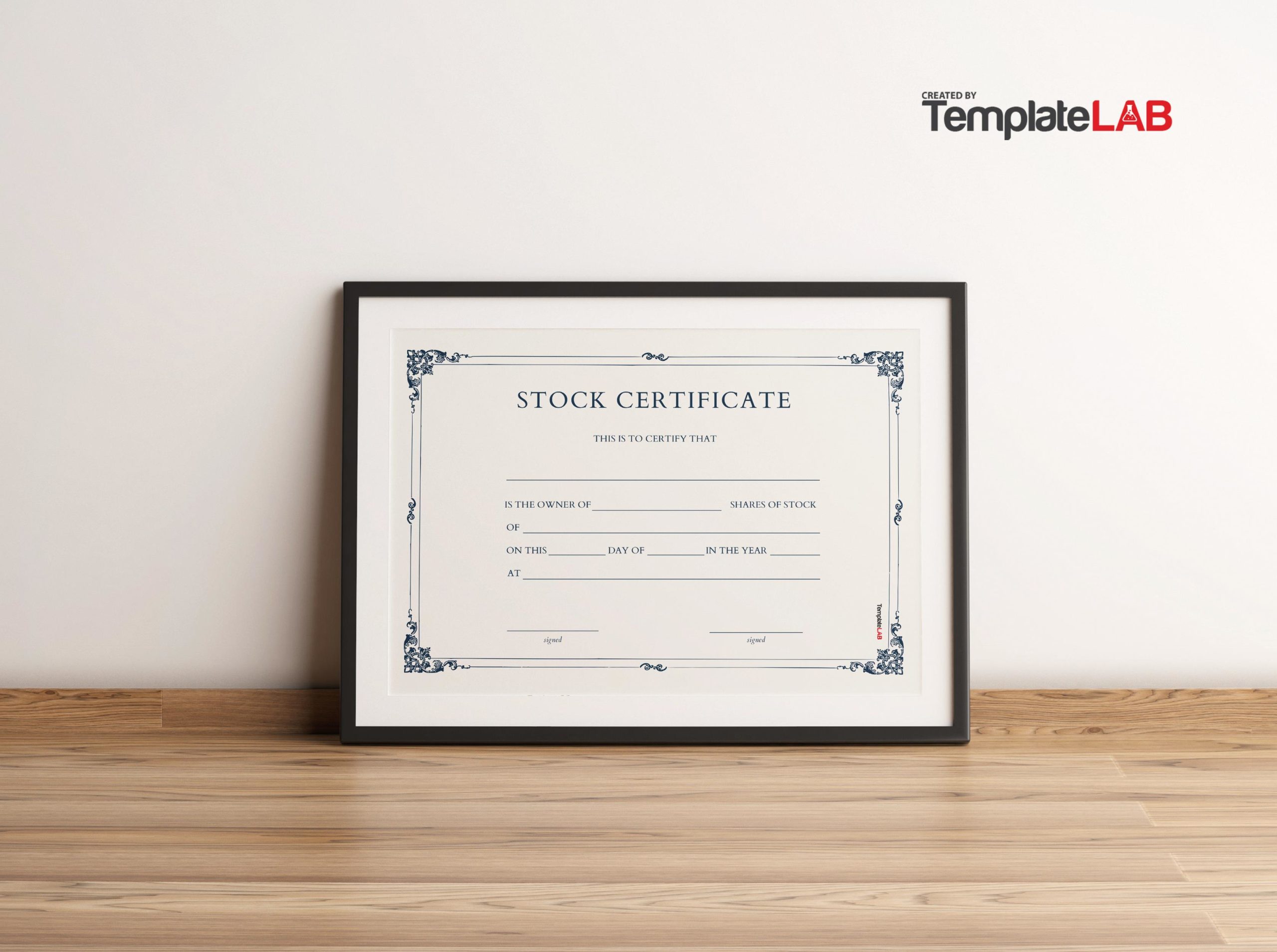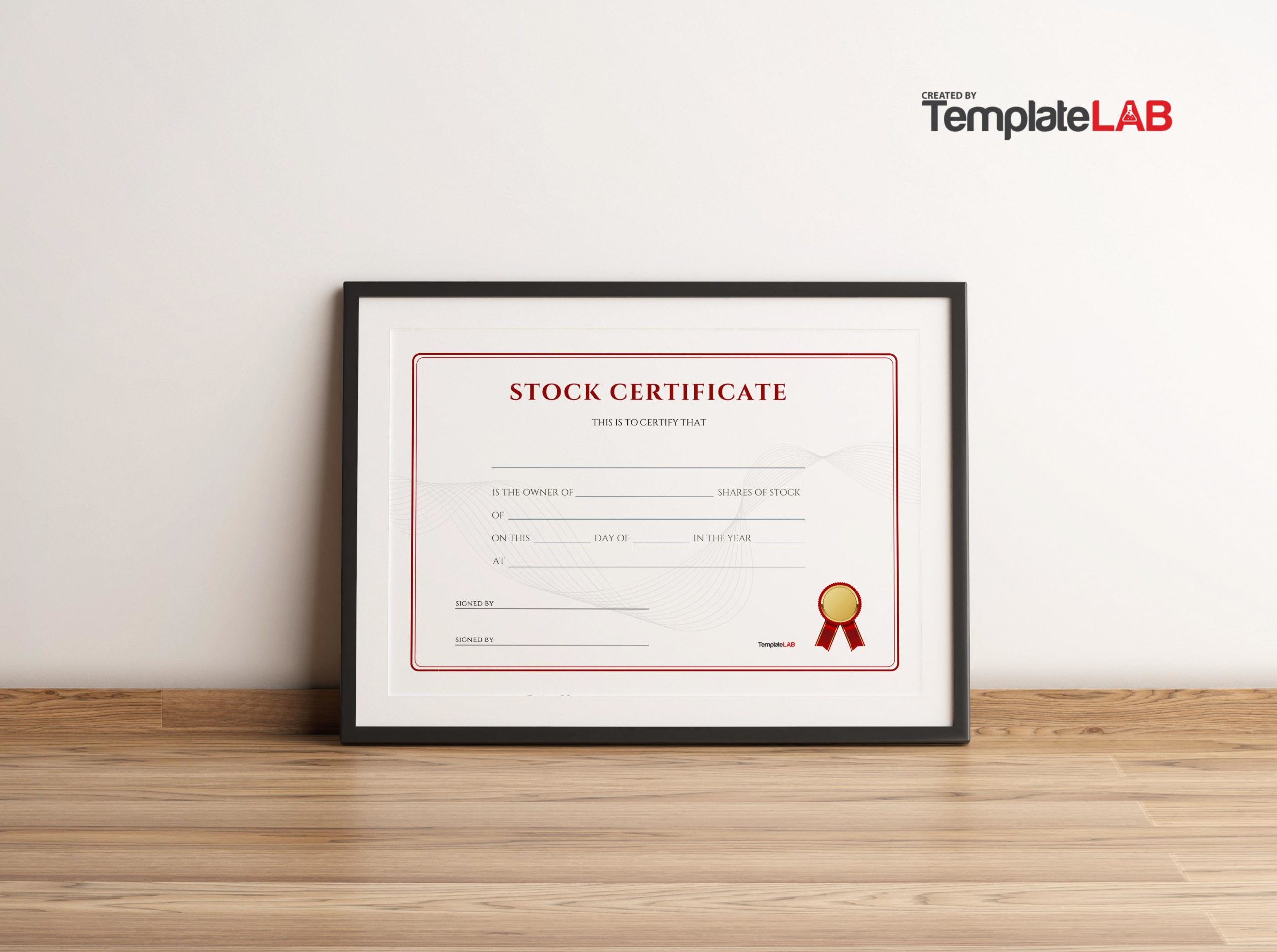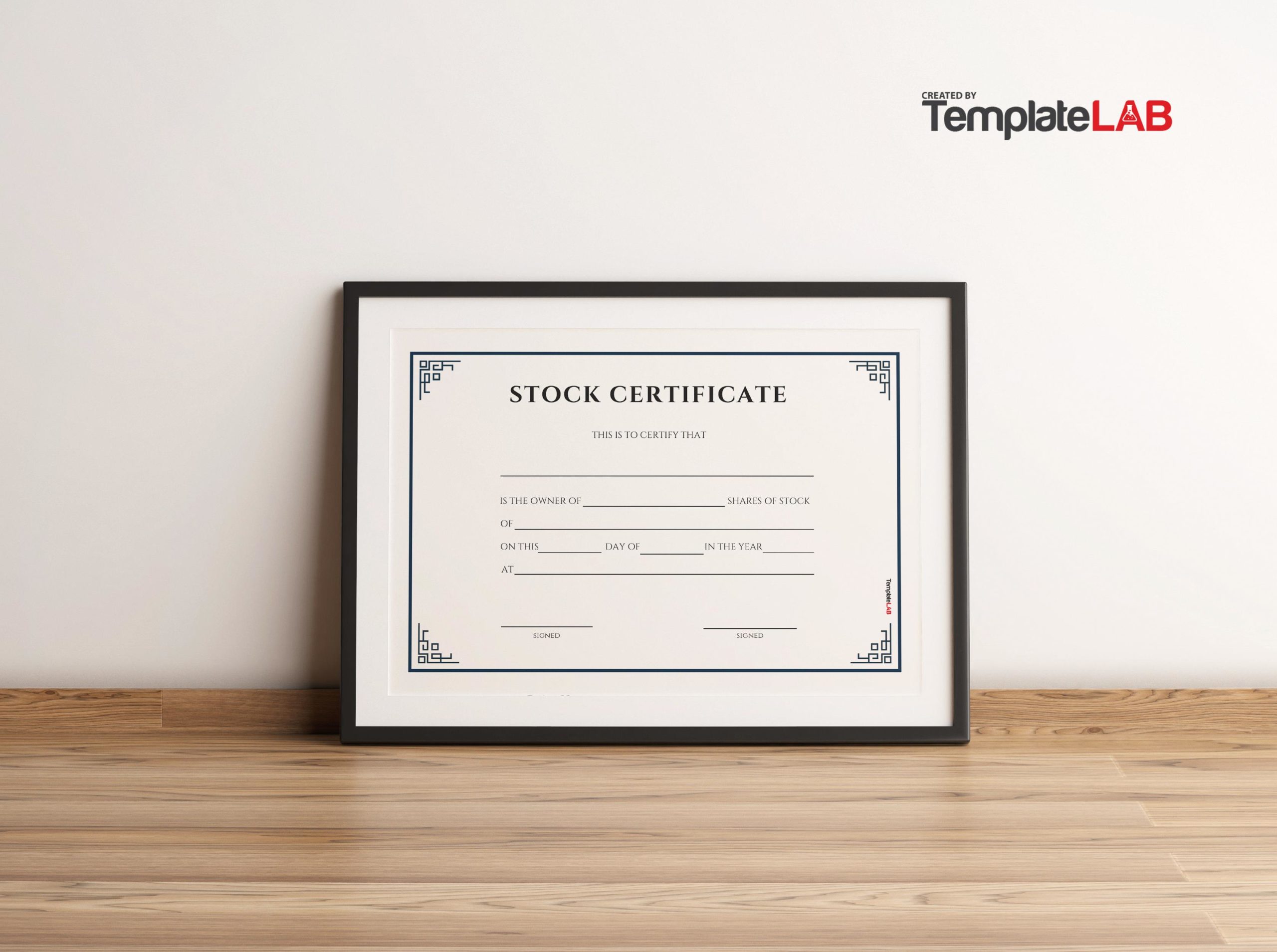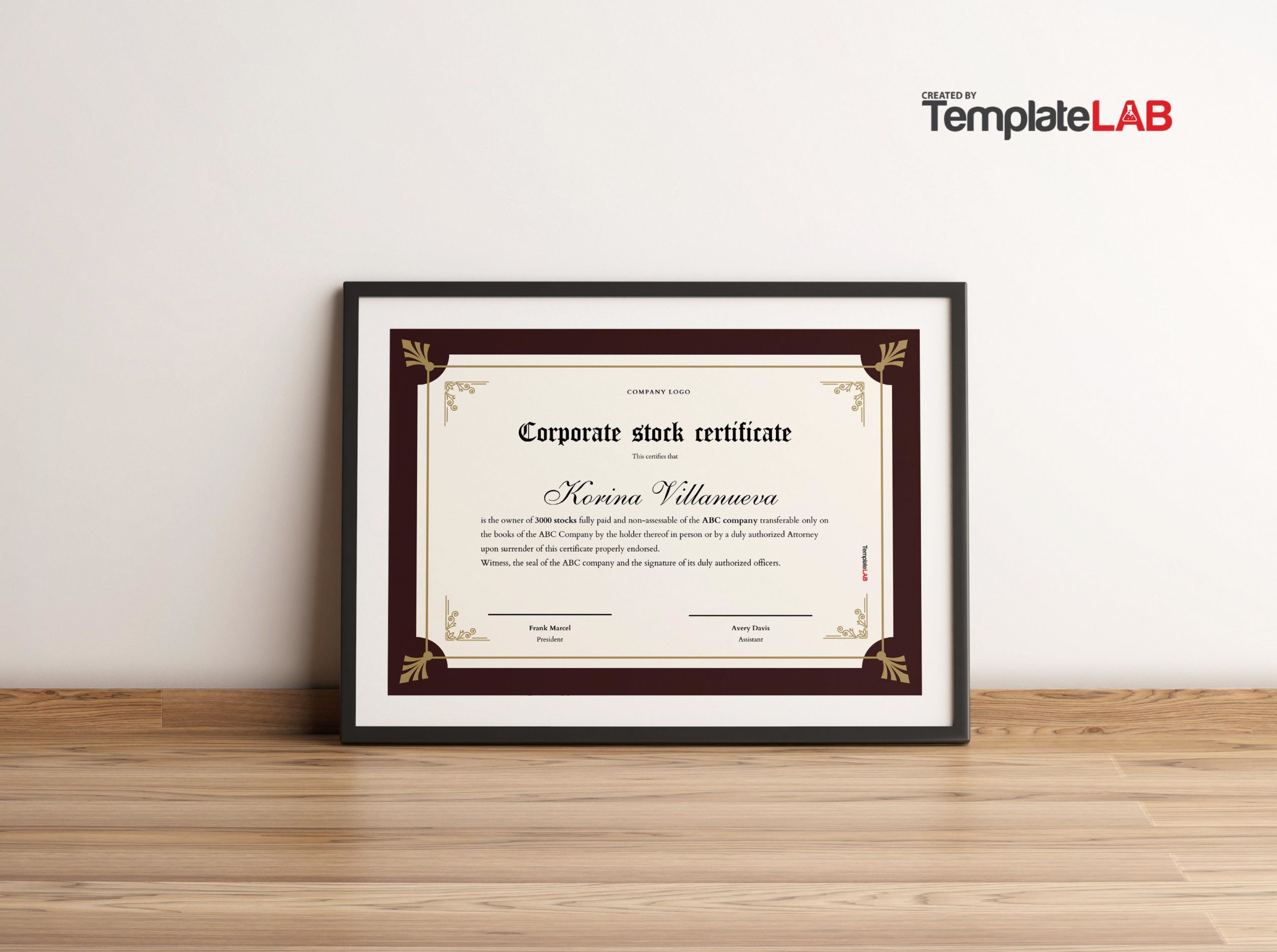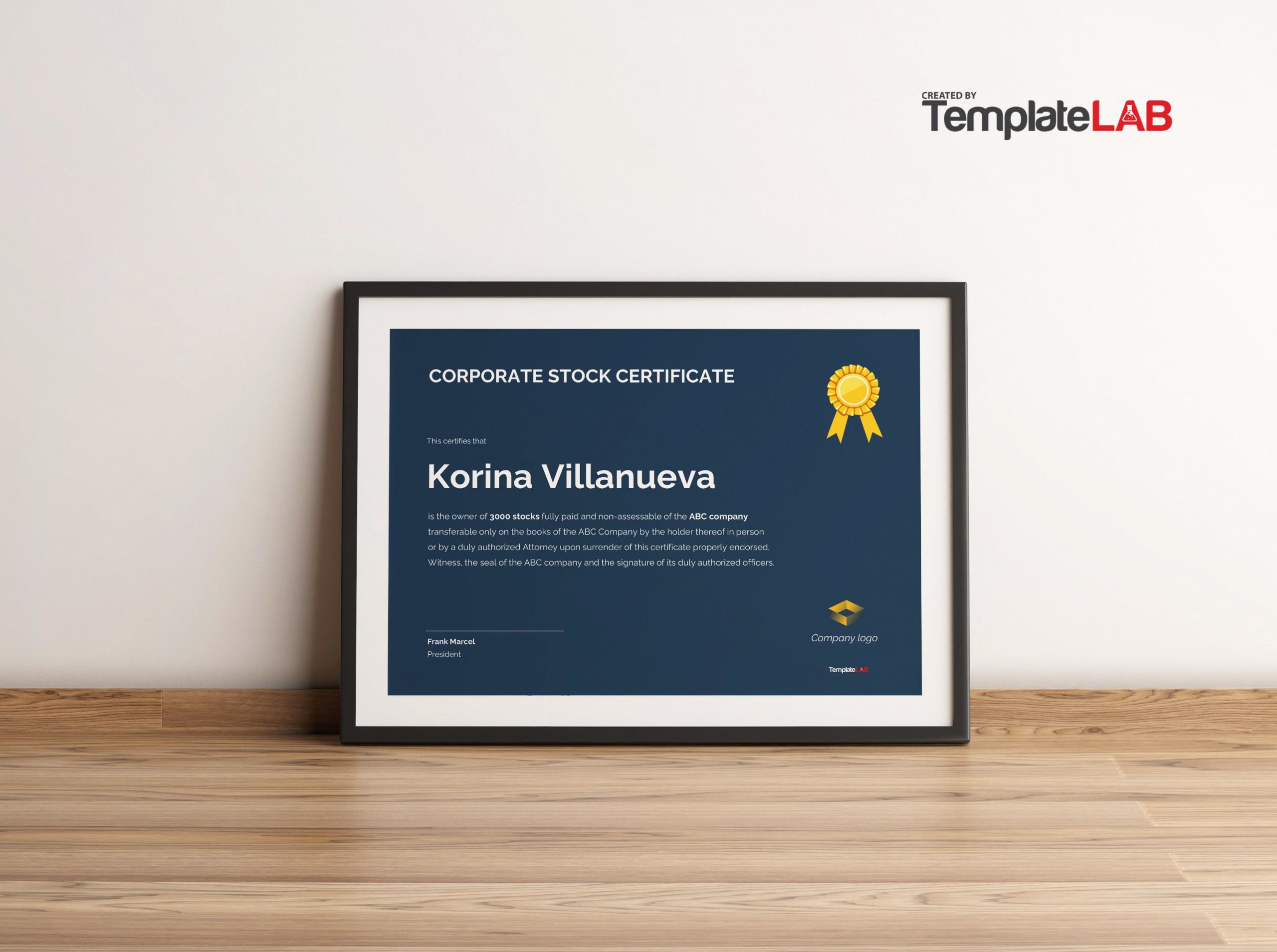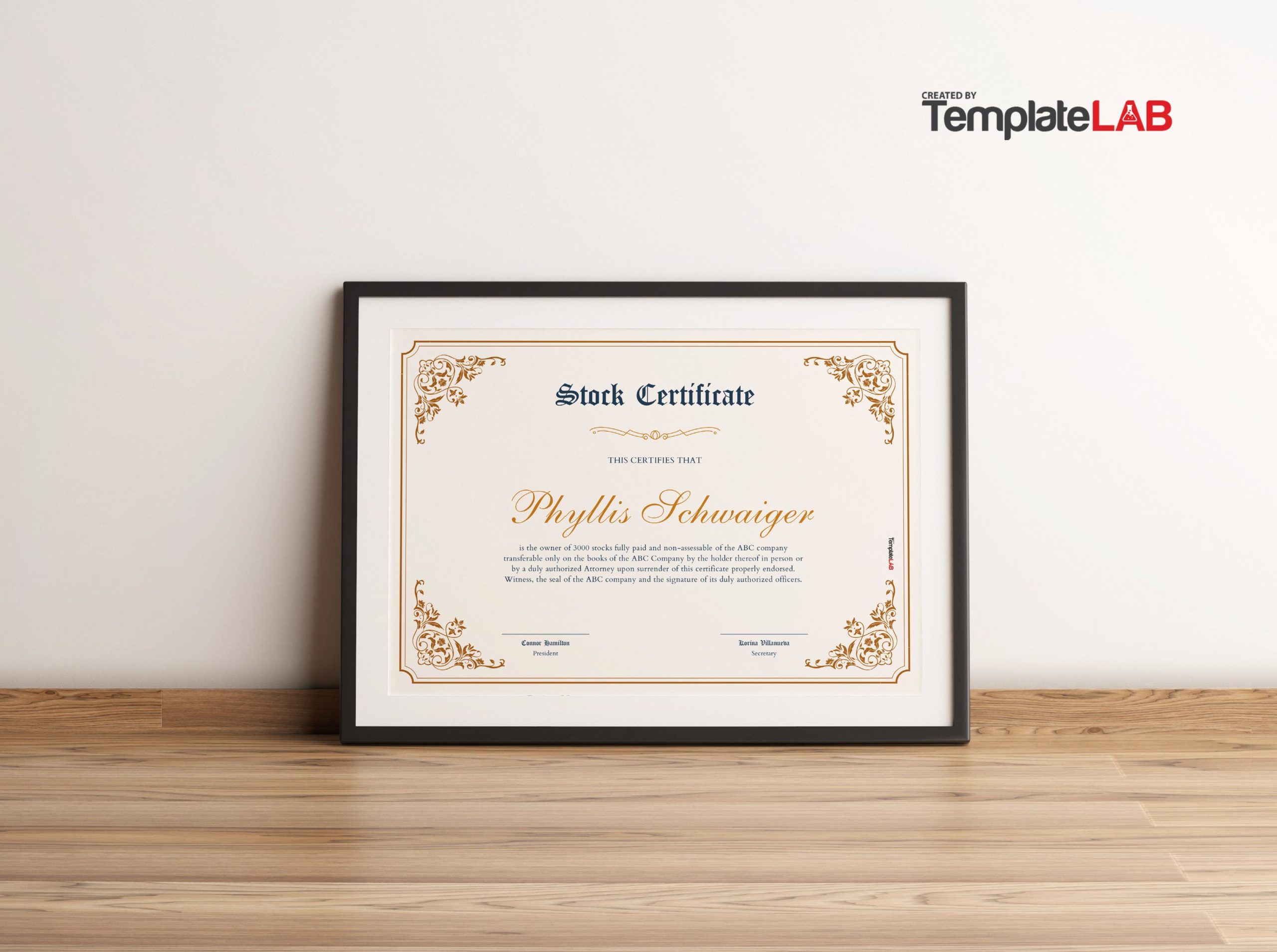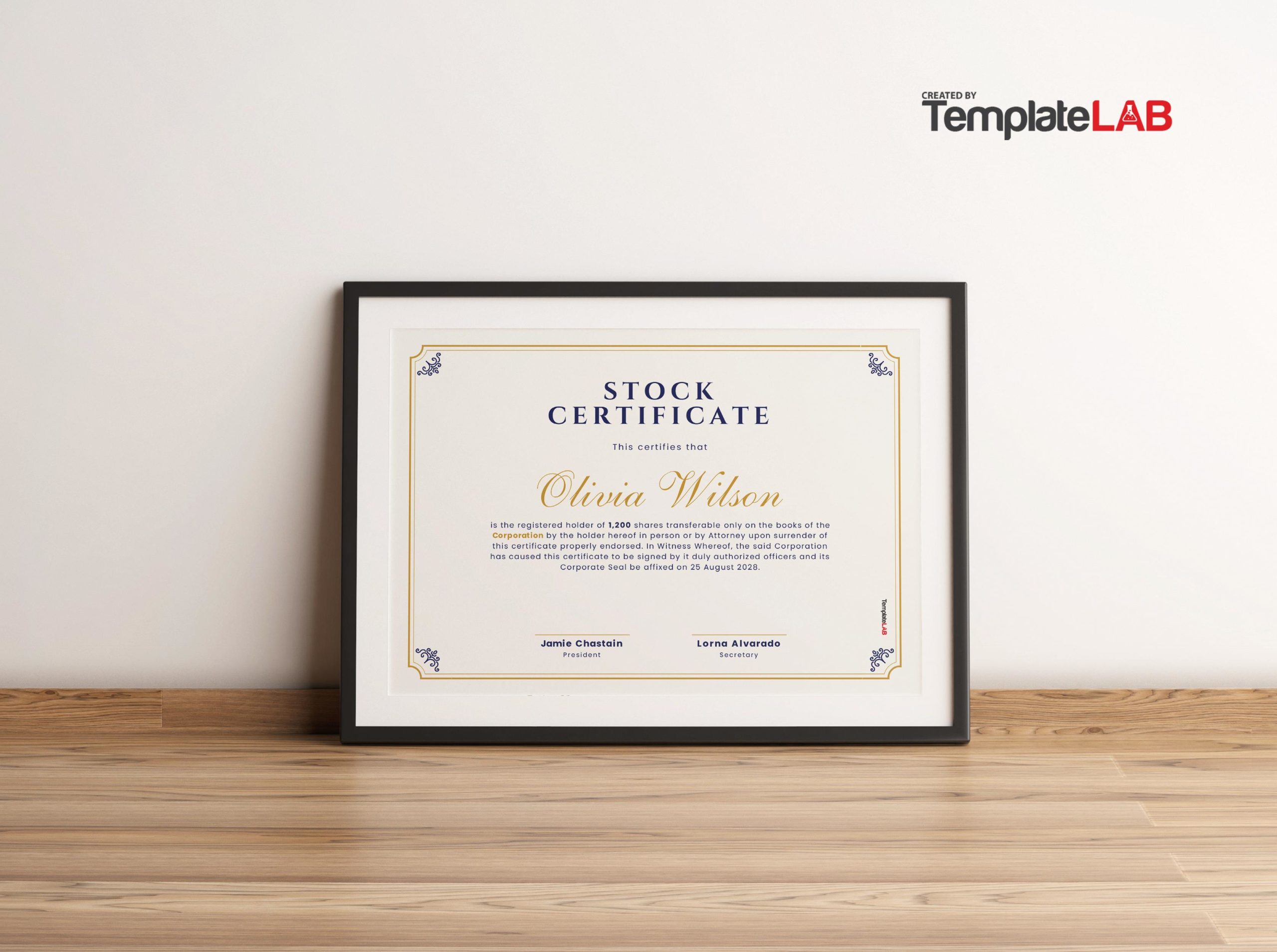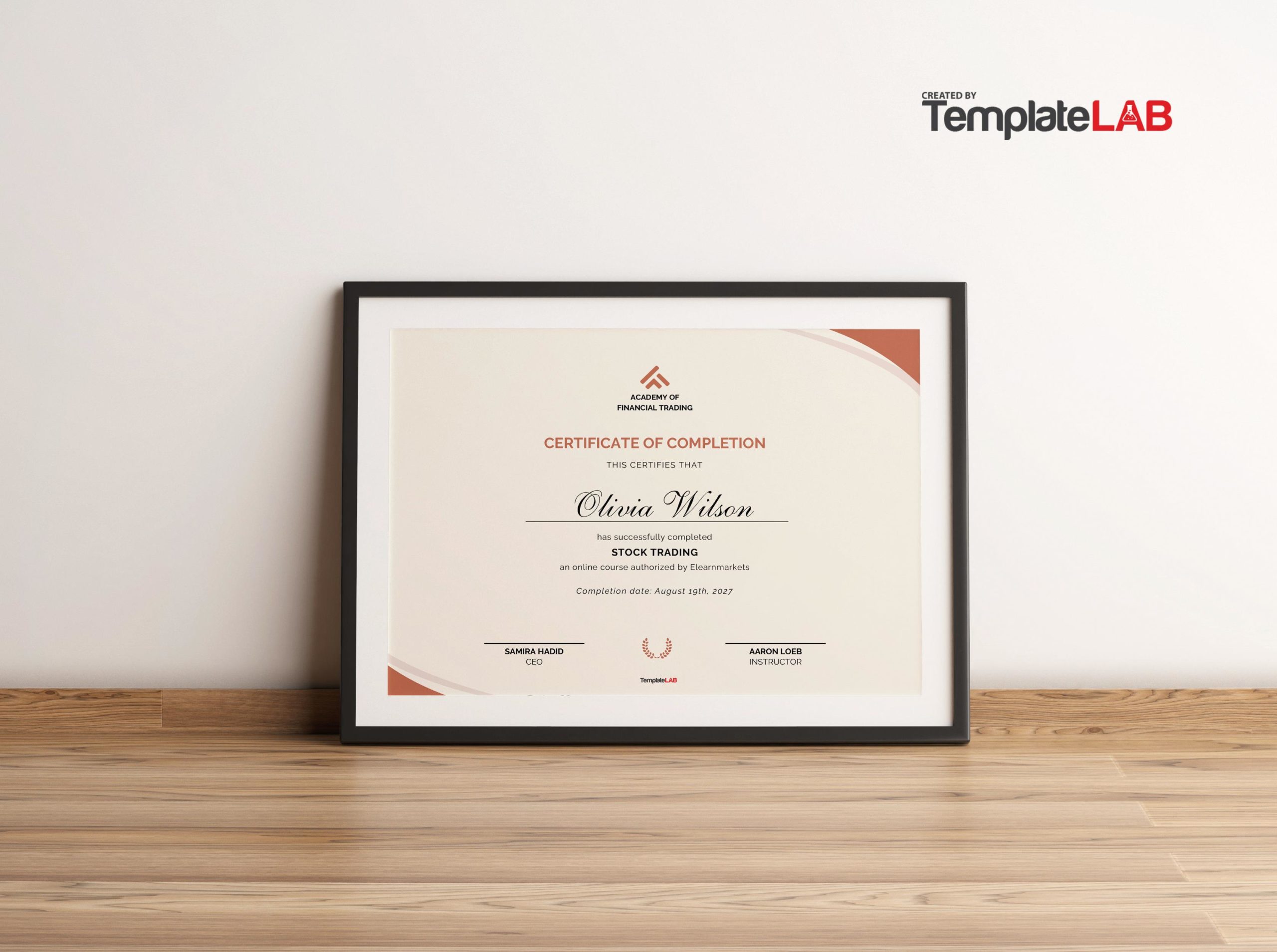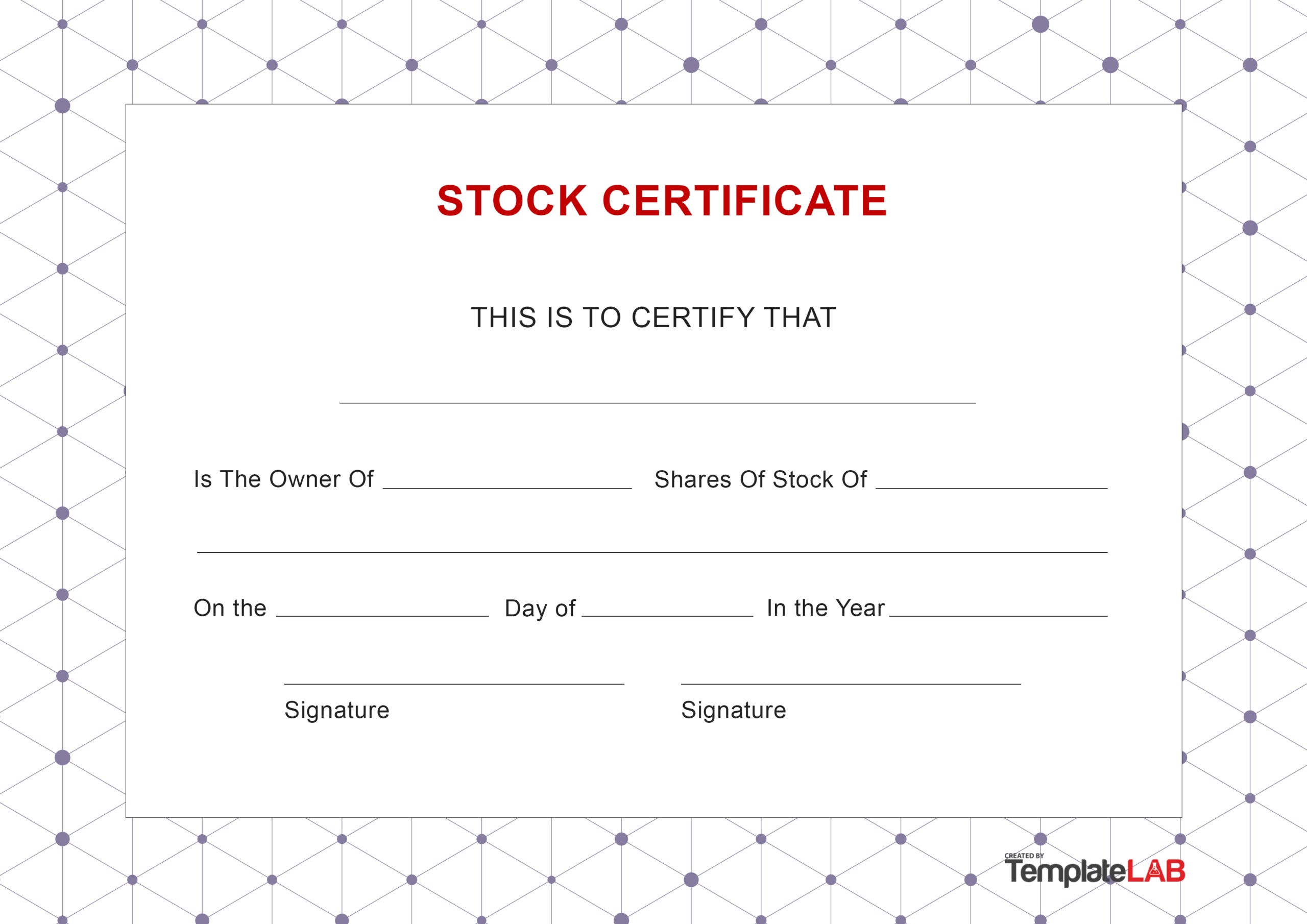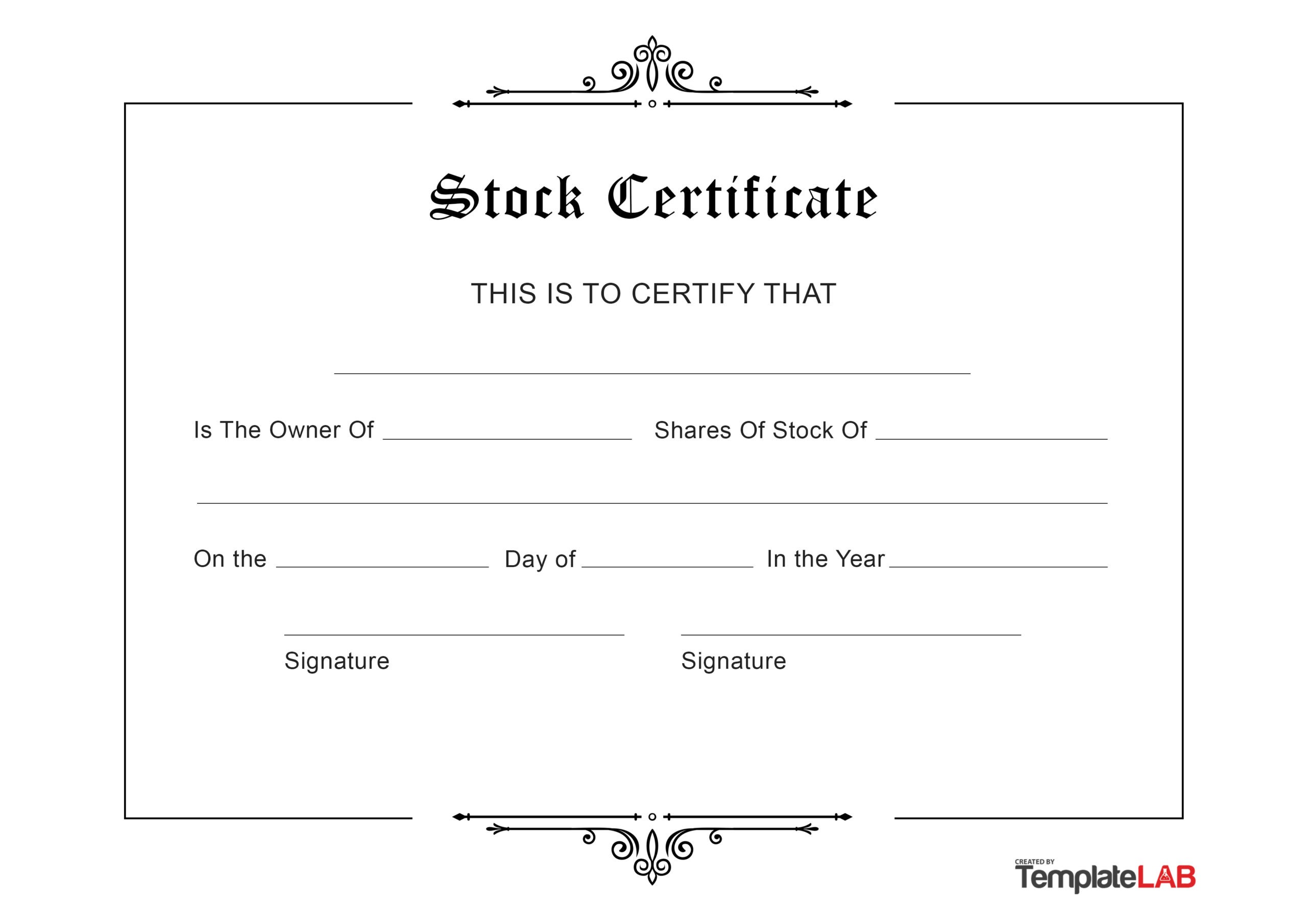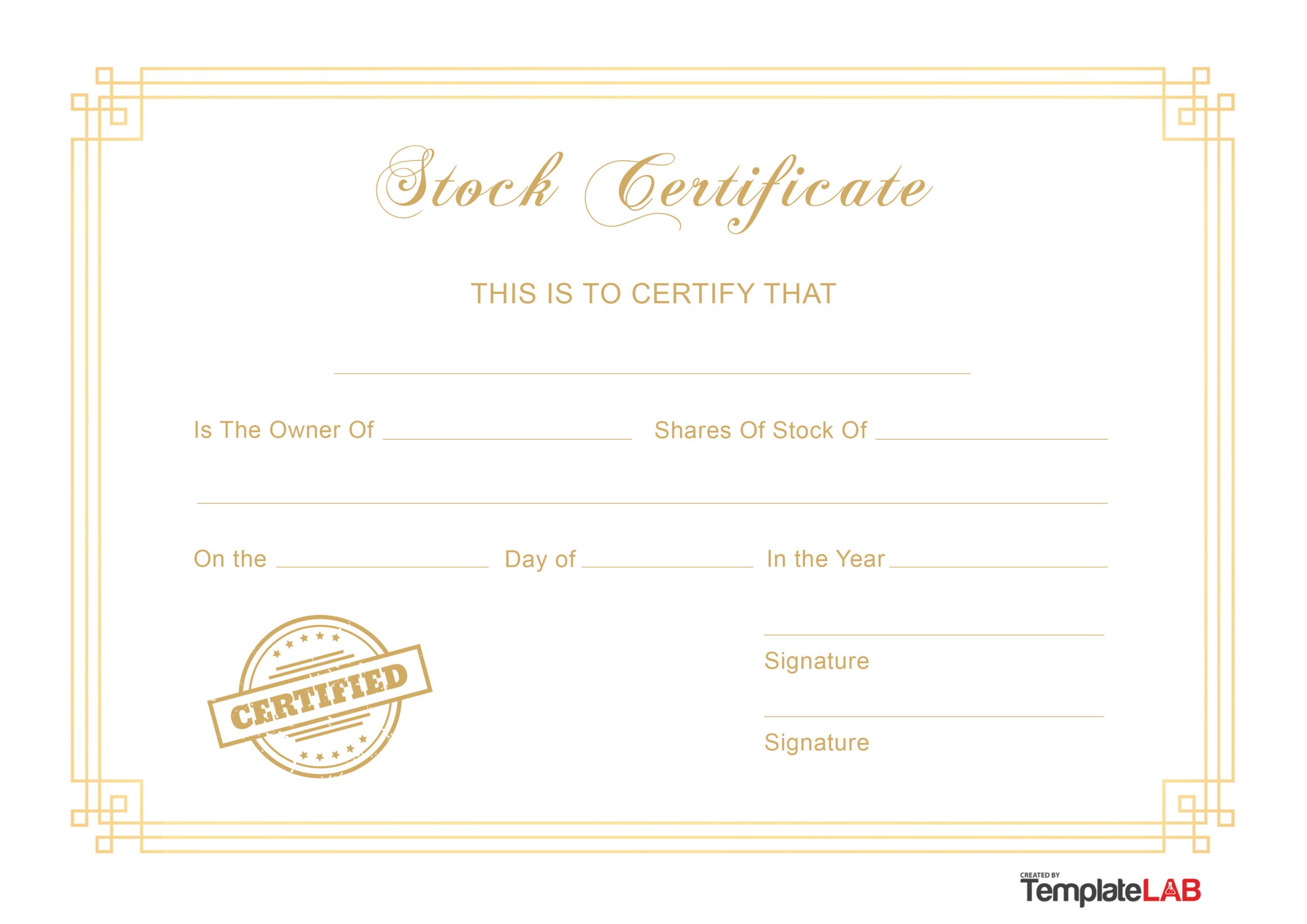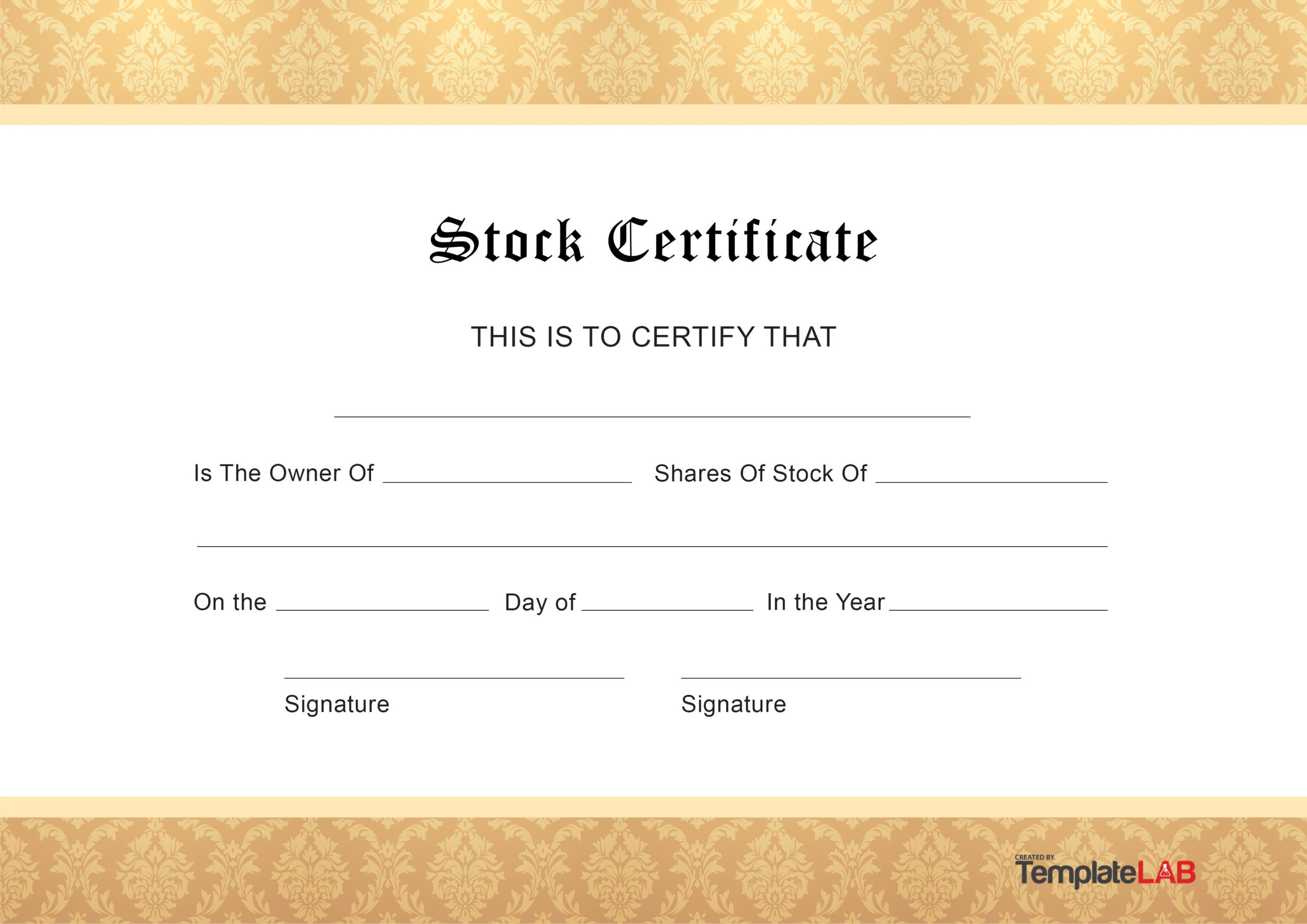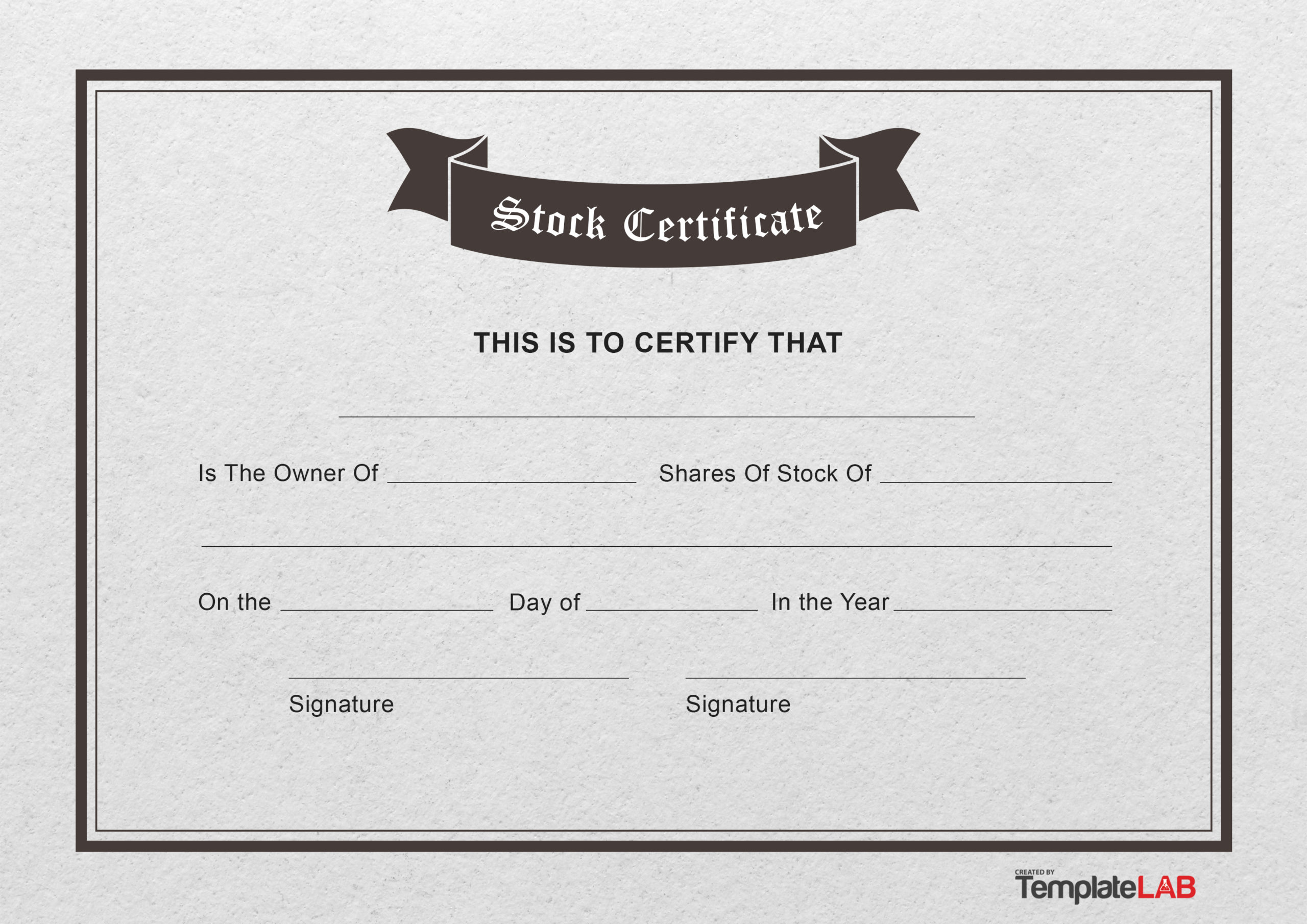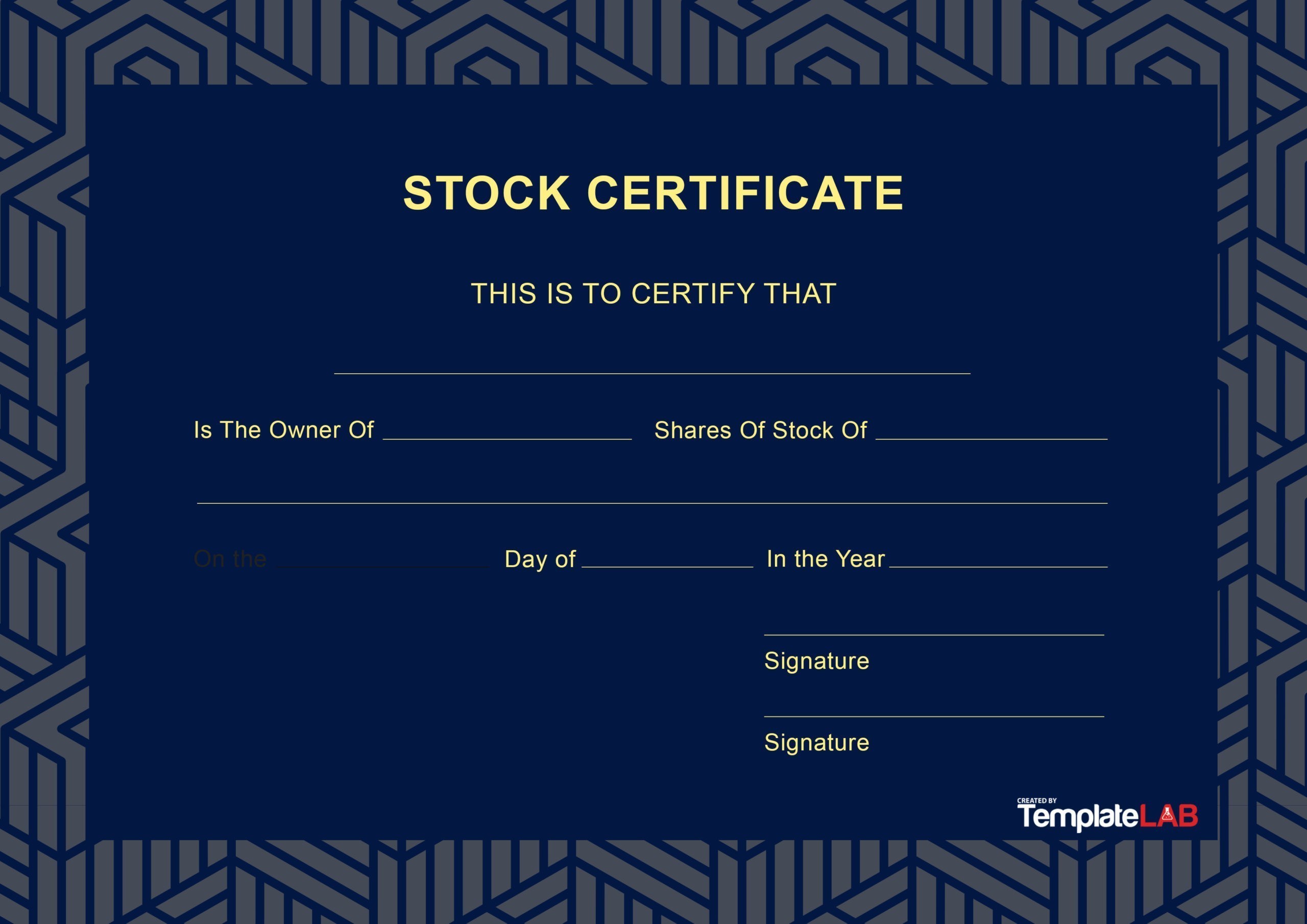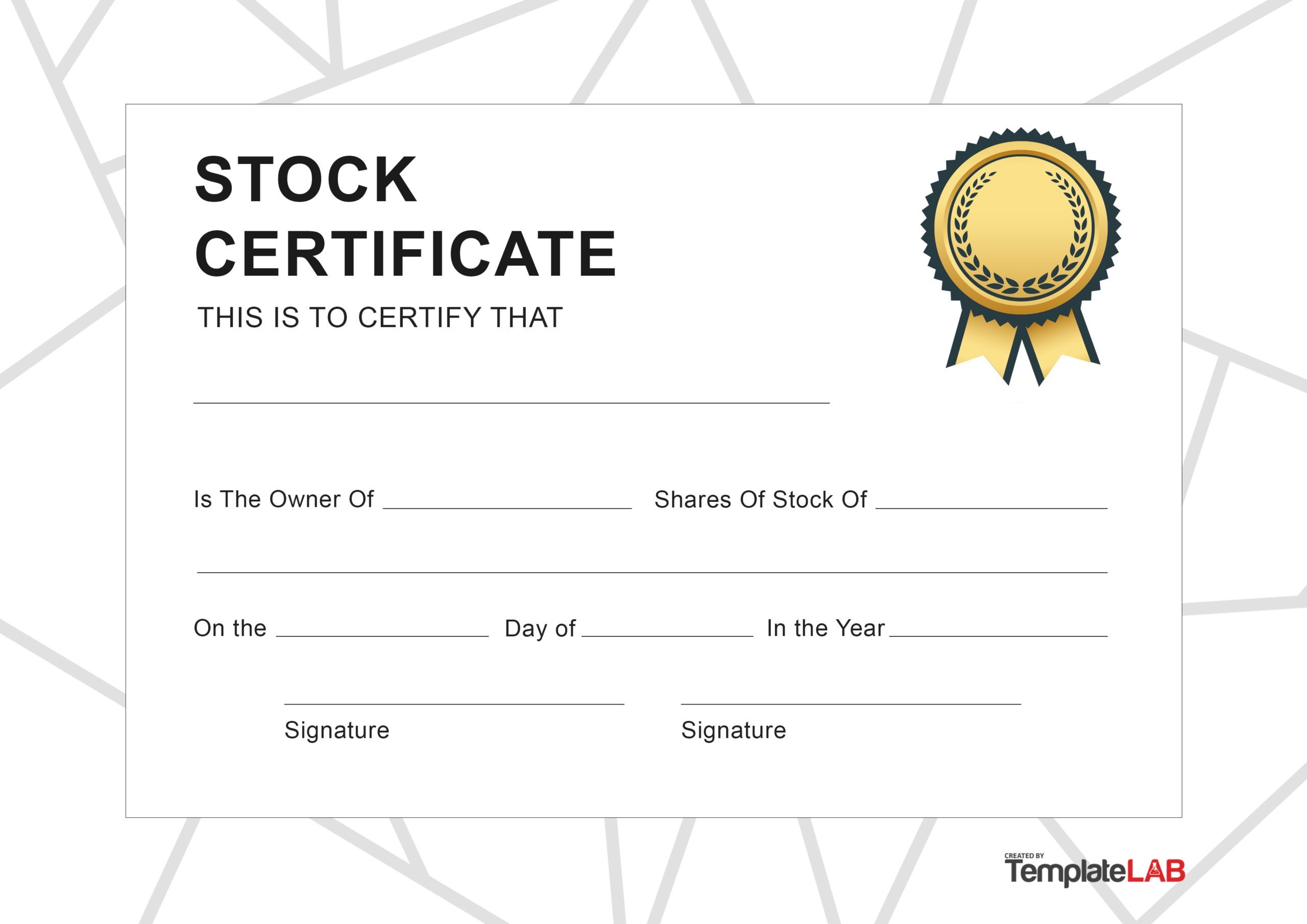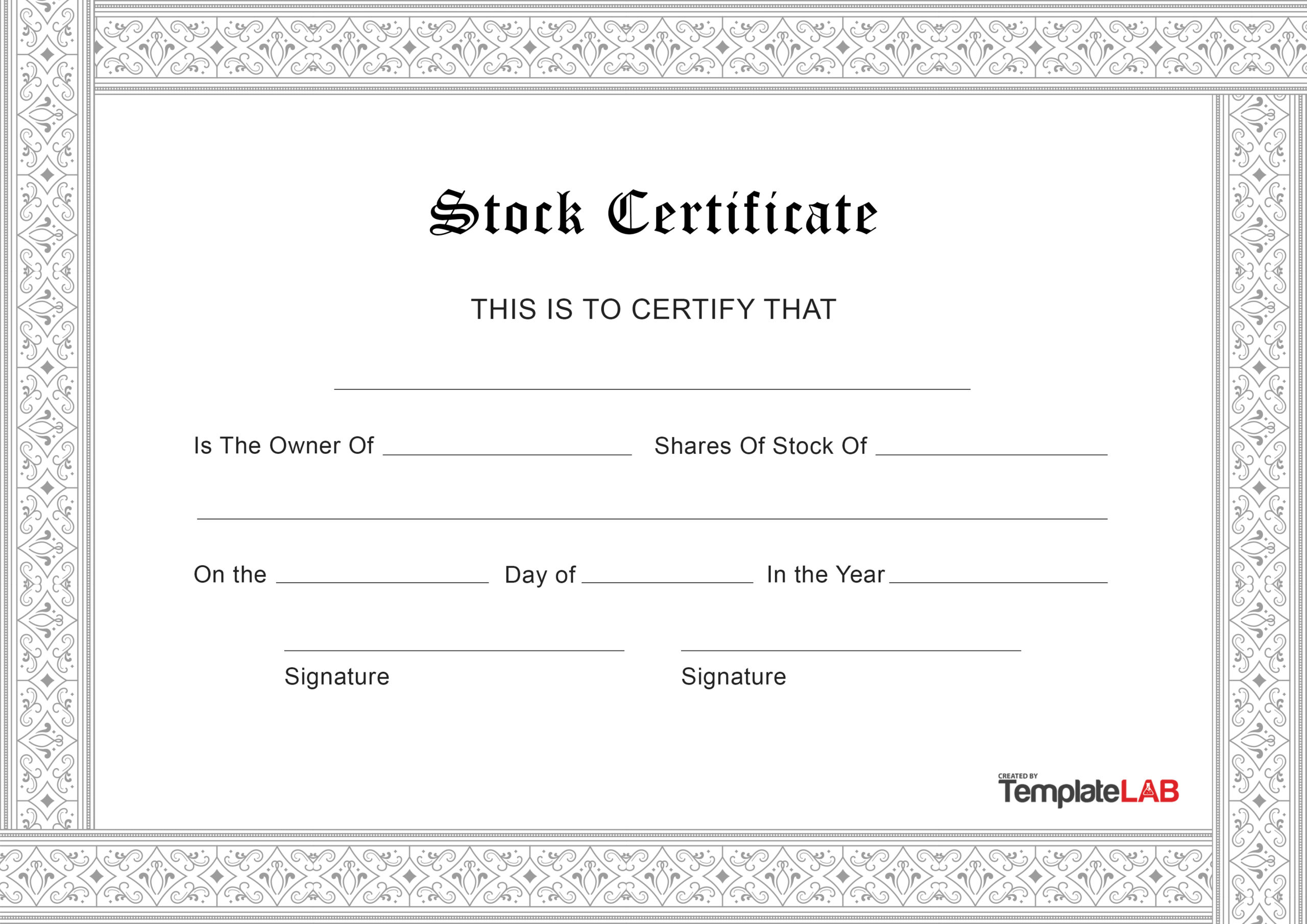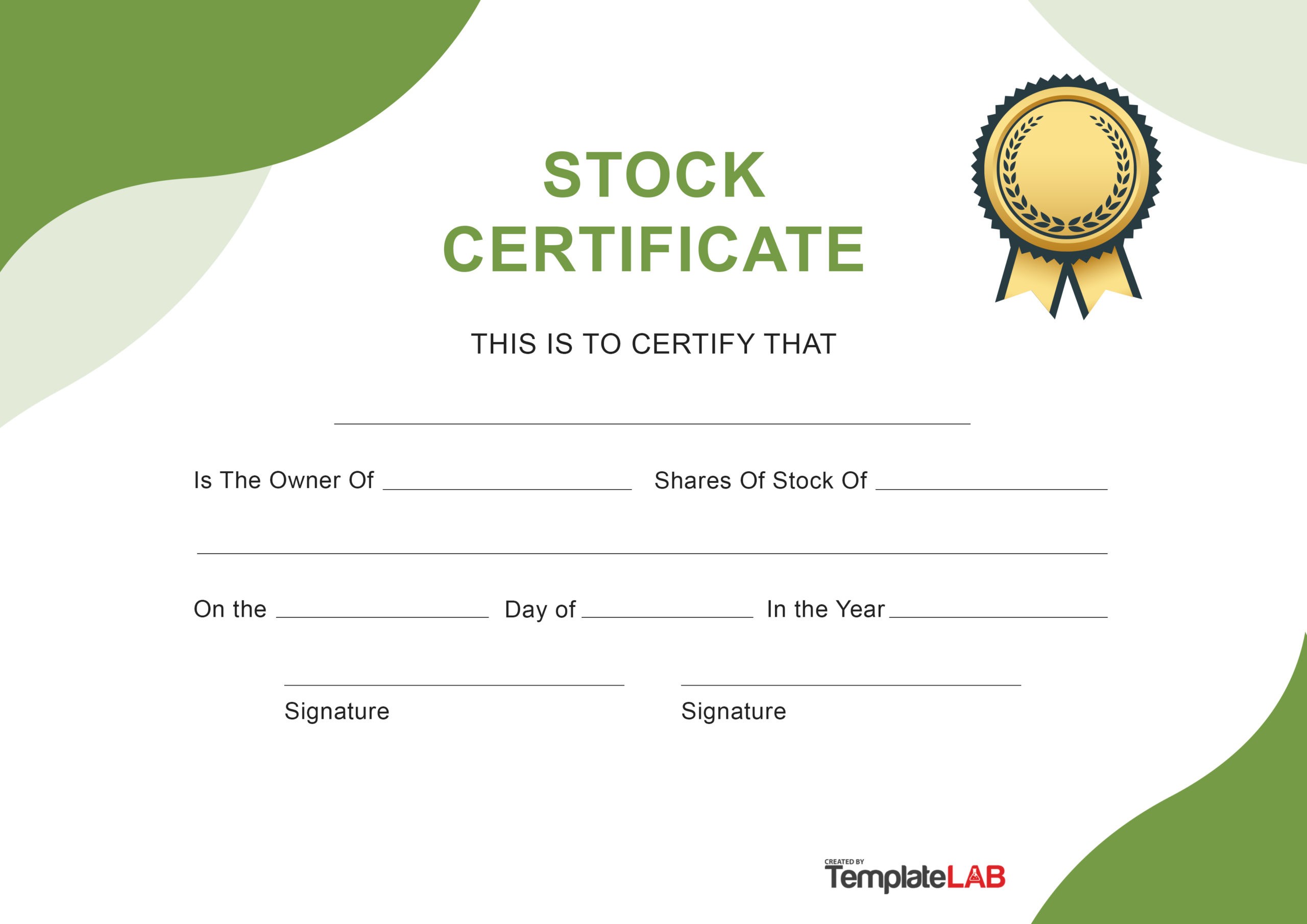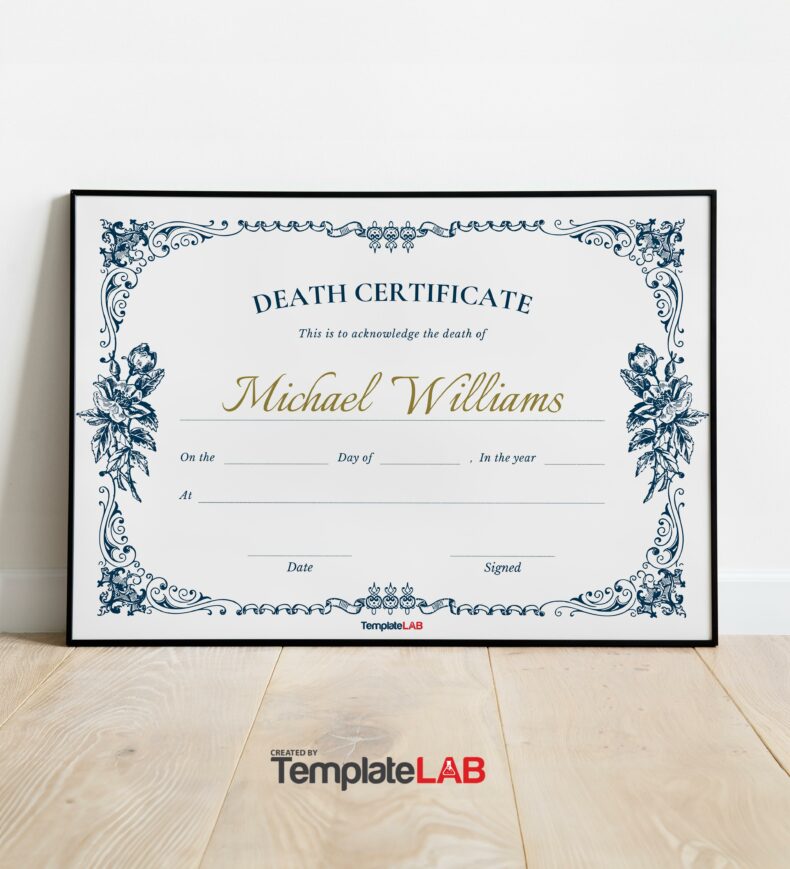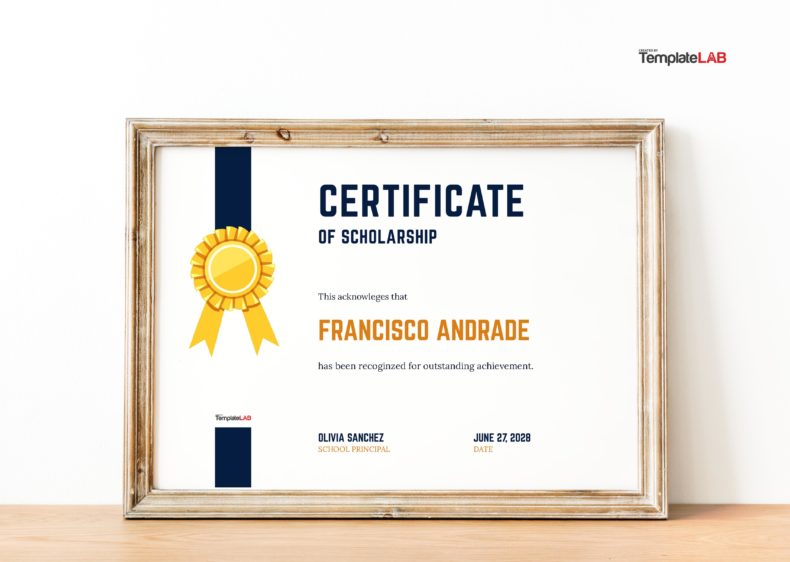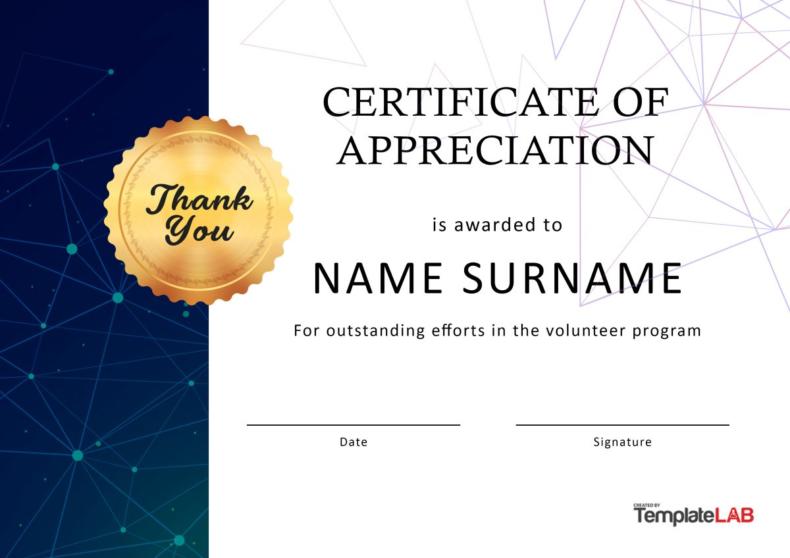A stock or share certificate is a legal document that proves ownership of a certain number of stocks or shares in an organization. The original certificate is usually issued as proof of the transference of the shareholding.
Usually companies issue these when the organization decides to transition from a private to a public market for whatever reason that necessitated it. When this happens, the first stock offer the company makes is called an IPO or an Initial Public Offering and it can also issue more stock if it needs to.
Table of Contents
- 1 Stock Certificate Templates
- 2 Information necessary in a stock certificate
- 3 Common Considerations when applying for a stock certificate
- 4 Shares Certificate Templates
- 5 Types of Stock Certificates
- 6 Determining the Value of Old Stock Certificates
- 7 Corporate Stock Certificates
- 8 Why Organizations Issue Stocks
- 9 Privileges of a shareholder
- 10 How to cash in stock certificates
- 11 Why you should use a stock certificate template
The type of stock certificate template you get will depend on the type of stock you need. When someone purchases stock in a company they will get a stock certificate that proves their ownership. Both the buyer and the issuer of the stock can use this certificate to safeguard legal rights such as if:
- The buyer has to provide proof of ownership to a stockholder.
- The buyer has to provide proof that they were issued stock shares from a new organization.
- The buyer has to prove of stocks that were transferred to the holder of the stock from a previous one.
Stock Certificate Templates
Information necessary in a stock certificate
The free stock certificate template you download and fill out will only list the stock owners along with the number of shares they own. In other words, it is not the stock itself rather than a document that represents it and proves ownership.
A typical stock certificate template should have fillable fields for the following information:
- Name of the organization issuing the stocks
- Location of the organization issuing the stocks
- The name of the buyers
- The certificate number
- The number of shares
- Minimum price/share if available
- Whether the buyer is purchasing common or preferred stock
- Whether there are any restrictions
- Date of issuance
If the organization that is issuing the stocks has an official corporate seal, then it should also be affixed on the certificate.
Common Considerations when applying for a stock certificate
There are certain things that you should keep in mind when you are applying for a stock certificate:
- The certificate will not mention any securities bought that are bought; only the shares that are purchased will be mentioned.
- A stock certificate that is registered will include the percentage of the title for the stockholder along with the total number of shares.
- The paper used to make the stock certificate has a unique background that proves the authenticity of the certificate.
- A registered certificate can be used in legal proceedings by a stockholder.
- Organizations may not issue certificates each time they buy shares. These are usually only issued the first time they do so.
- In case a certificate gets lost, a new one can be made but not before a fine is paid for it. Most companies today store their stock certificates safe electronically so chances of them getting lost are slim to none.
- The signature used in the certificate cannot be administered electronically.
Types of Stock Certificates
Registered stock certificates – A registered stock certificate is issued as proof of title and acts as a record for the actual share holders. This information appears in the registration record of the organization that issues the stocks.
Bearer stock certificates – This type of stock certificate is exclusively for the bearer of the stocks and gives him/her all legal rights that are associated with it. However, these are rare now and were typically used for shares that were bought offshore and were used to transfer the title to different assets that were owned by the organization issuing the stocks without the need to pay stamp duty.
Determining the Value of Old Stock Certificates
Even if organizations that issued stocks:
- Lost their privilege as an active company under the certificate
- Merged with another company
- Changed the name of the company
That does not mean that they are not financially active and there are a number of ways to confirm whether the stock certificates they issued are still valuable or not. The following are some of them in detail:
Book entry
Most stock certificates are kept by official organizations such as a brokerage firm, the bank or a transfer agent. However, these are common only for certificates of deposit and bonds.
Electronic records
Most brokerage firms that handle stocks and bonds hold certificates in street name. This basically means that they keep track of it electronically which allows them to make fast purchases, make dividend payments and conduct sales through the underlying organization.
Direct Registration System
Most stock certificates are now processed via a DRS or a Direct Registration System which is an electronic database used by transfer agents. This system reduces the need of paperwork significantly along with overall costs.
Types of Markets
Stocks comprise of two markets: primary and secondary. The former one is also called a new issue market and it allows corporations to sell stock to raise cash. IPO investors can then sell new ones in the latter to create an effective ‘trade route’ between buyers and sellers.
During such trades, investors typically trade stocks that they already possess and have legal claim to. The organization that issued new ones does not get any money in the bargain though.
Corporate Stock Certificates
Why Organizations Issue Stocks
An organization typically issues stock so that it can raise capital for business expansion. For example, it might need to
- set up a new factory
- launch a new product,
- hire more employees on the payroll in order to become more profitable.
- Merge with another company
- Decrease debt
- Give owners of the company more flexibility
- Pay for new buildings
- Finance new inventories
- Make the company more valuable in the stock exchange
The company’s stock is typically managed by an investment banker and he/she also serves as a link between the organization and the investors. Hiring one is an important step because once a company decides to go public, it has to follow a number of federal and state regulations that all publicly traded organizations have to.
Besides this, they have to make some confidential information public such as earnings. A great deal of effort is made to ensure investors are kept fully informed about anything to do with the company and they also have to pay accountants and attorneys managing the stock. Shareholders have to be completely aware of their rights via the rights plan which is usually proposed by the management head of the company.
However, they can only enjoy those rights if they decide to buy shares, transfer rights when they are sold and purchase new ones. Plans for a change in shareholders are typically mentioned in print in the yearly proxy statement and it is also announced publicly. Take IBM for example; the board undertook a plan which allows them to issue a dividend of one right for each common share per shareholder.
You own part of the company
When you purchase stock in a publicly traded company, you basically own part of it. For instance, if you buy a share in Facebook, you will be privy to the same benefits and rights as Mark Zuckerberg who owns a lot more shares. Most organizations allow one share per vote but that does not reduce its value.
You will receive regular progress reports
As part owner/shareholder of the company, you will also be sent regular quarterly reports along with a yearly one that will keep you abreast of its financial progress. The latter will comprise of information pertaining to how much money the company has made and lost before the report was issued along with reviews of company activities.
The former on the other hand is published and comprises of comprehensive data in charts, images and graphs but it provides more or less the same info.
Invitations to Annual Events
As a shareholder, you will receive invites to yearly shareholder event meetings where you will get the chance to meet other shareholders and management executives in the company. You will also be allowed to vote on matters that the board presides over. If you are unable to attend these events, you can still vote in your absence via an absentee ballot that the company will send your way. The main responsibility of the board and the managers during those meetings is to increase the value of the shareholders and to prove the inherent value of the organization.
How to cash in stock certificates
If you get your hands on an old stock certificate, you can still sell it either through a transfer agent or a broker who can sell it for you. Before doing so, research how valuable the stock really is. You may be holding a fortune in your hands. Even if it turns out to be a useless piece of paper, it would still be wise to have it checked out.
Most companies make use of transfer agents to manage companies as well as individuals who own stock shares in them. This is typically a trust organization or an agent but some large companies, such as Disney for instance, act as their own transfer agents.
These agents have 3 major functions:
- Cancelling and issuing stock certificates
- Acting as the middleman for an organization to pay interest and dividends of stocks.
- Managing compromised or lost certificates.
In order to determine the transfer agent for the organization that is handling your stock shares, you can visit the company’s website. Head to the Investor relations page to be directed to the agent. If that does not work, then you can always opt for a private firm of transfer agents.
Once you find one, ask him/her how you can transfer your stock to direct registration. As mentioned before, DRS allows stock owners to manage their stocks in entries with an agent rather than an actual paper based certificate. In other words, the agent will keep a record of your stocks which can hold up in court or any other legal proceedings if called upon. Once that is done, you can also sell your stocks anytime you want. The DRS will protect you from fraud and other risks.
If you want to go the paper route though, you can always download a free stock certificate template. Once it has been filled and certified, it needs to be mailed to the transfer agent along with tracking information.
It would be a good idea to sell yours to a broker who does not manage your account but you will have to pay a fee for it. Replacing the certificate itself will cost you 2% of the value so it would be a good idea to insure the package you mail.
You will only be able to sell the stock when the agent confirms that it has been registered. Once that is done call the agent and tell him/her that you want to sell. The sale will take place at the end of a business day and you should get a check within 10 days at most.
Why you should use a stock certificate template
A stock certificate that does not have all of the components we discussed will be considered null and void. Rather than hiring someone to draft one for you, downloading free templates would be a more cost efficient solution.
You can also make changes in our templates according to your organizational needs and the investor/shareholder requirement. This will help you save a lot of time that would otherwise be wasted on drafting one from scratch. Have the final version checked by a certified lawyer or a transfer agent to ensure its authenticity.
We have a number of them available online and each can be downloaded completely free of cost. We encourage you to take as many types as you need to ensure you get a certificate that will meet your requirements.

